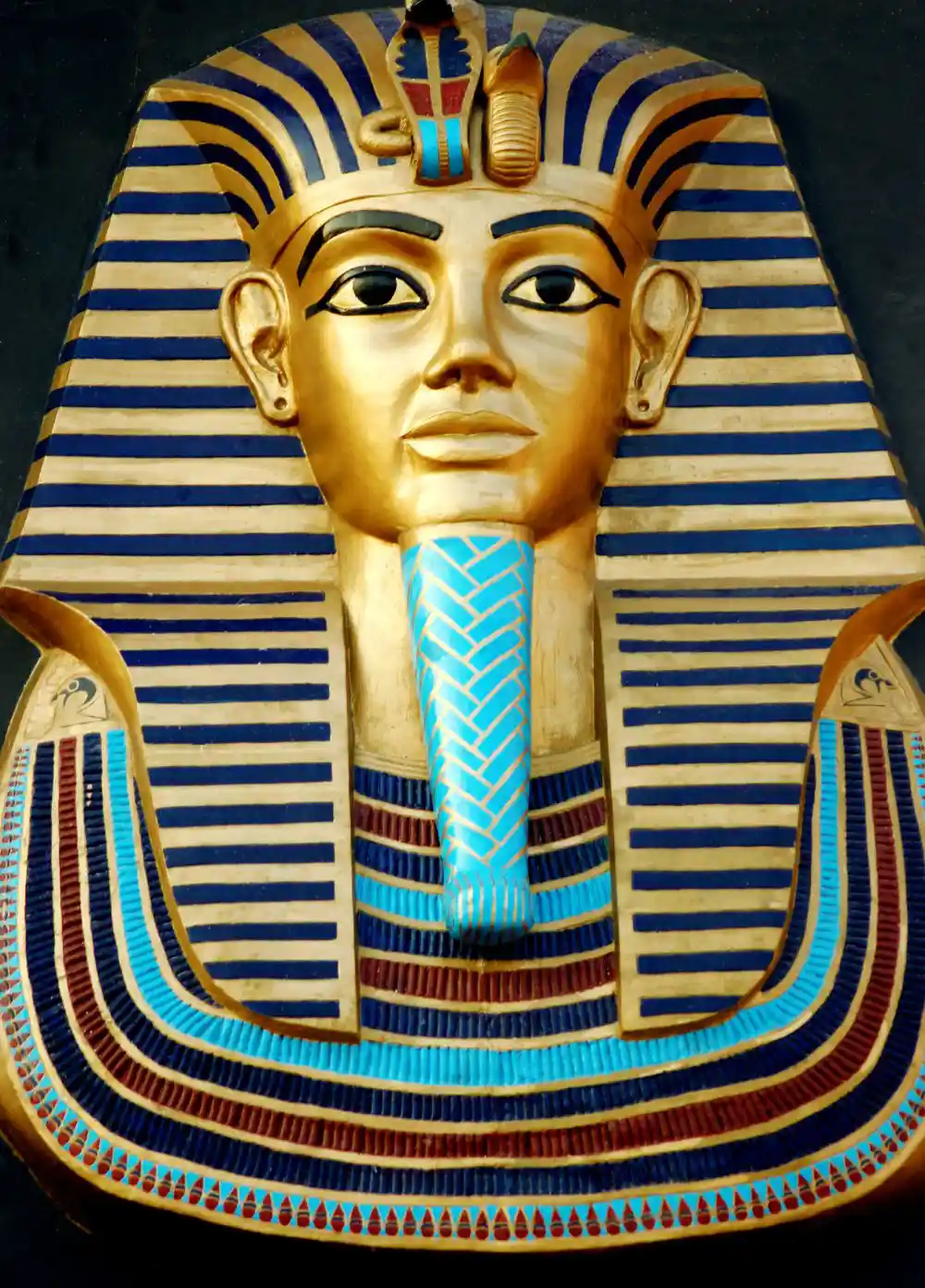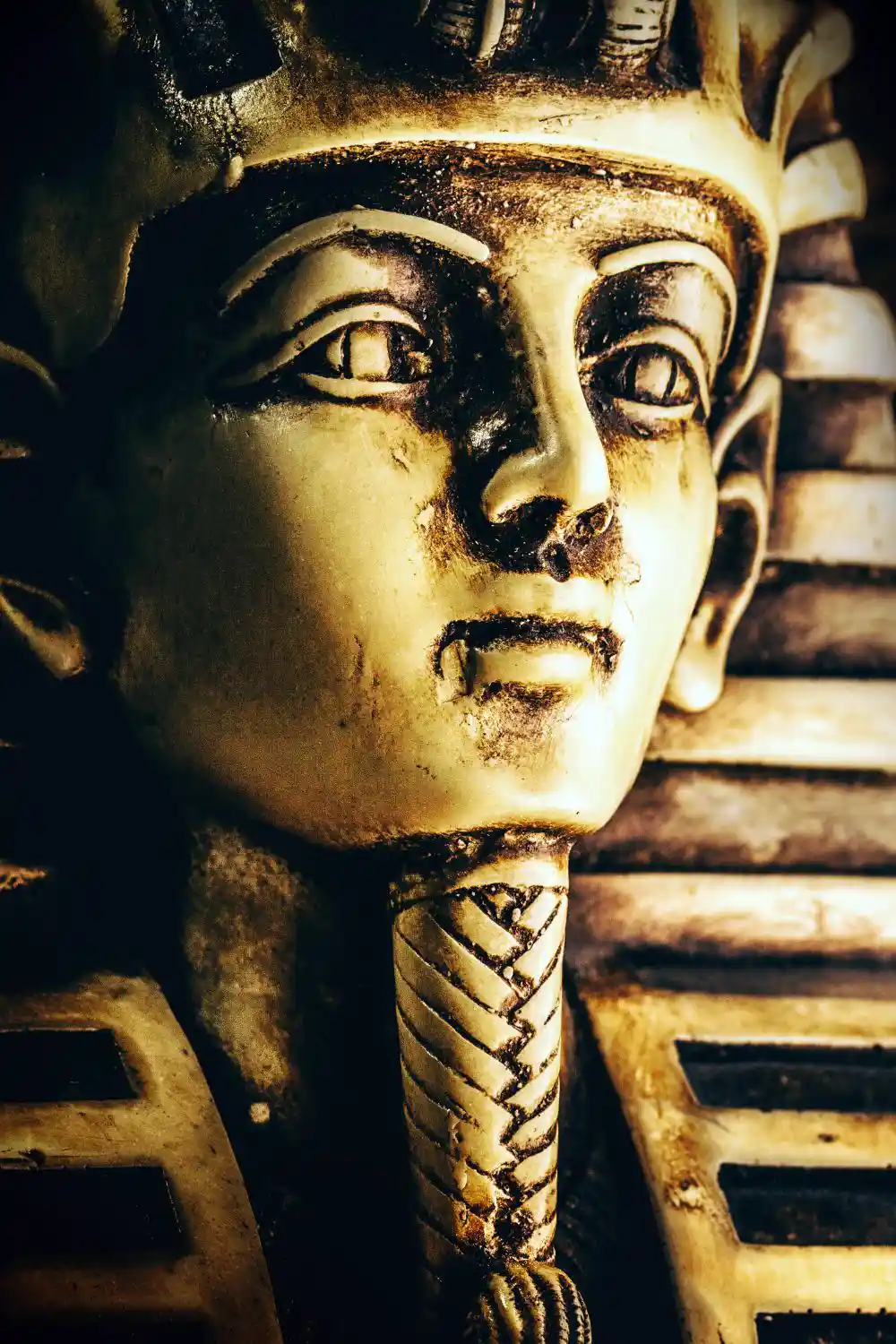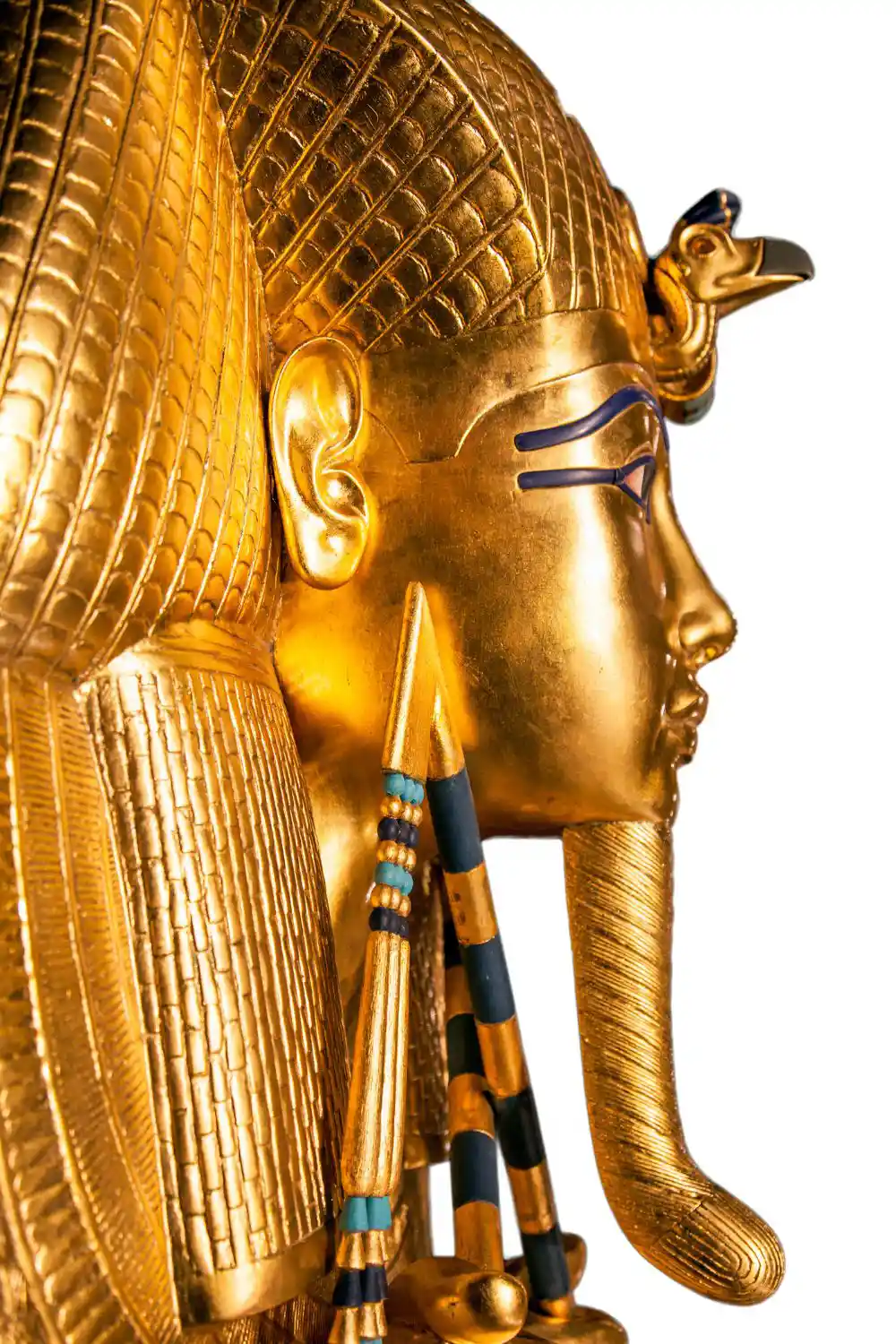Female pharaohs had different reasons for wearing a beard. The beard was seen as a symbol of the gods by female pharaohs. Many Egyptian gods like Osiris, Amun, and Ptah wore beards. Wearing a beard showed the pharaoh connected to the gods and possessed divinity.
The beard also meant authority and power. Only men could rule Egypt as pharaohs. Wearing a beard allowed a female pharaoh to take on a man’s role and show their right to rule.
The beard helped female pharaohs fit in with Egyptian culture. In most Egyptian art, pharaohs had beards regardless of sex. The beard made sure female pharaohs looked like usual pharaohs in Egyptian images.
Besides that, beards had useful purposes. The beard could hide that a pharaoh was a woman in a society where women rarely held power. The beard also protected a pharaoh’s face from the sun and dust.
Though it was a personal choice, the fact that so many female pharaohs wore beards shows the beard had importance as a symbol of power, authority, and divinity.
Famous female pharaohs like Hatshepsut, Nefertiti, Sobekneferu, and Tawosret were all rulers who contributed greatly to Egyptian society. They could assert authority by wearing beards, even in a male-dominated society.
Why did female pharaohs wear beards?
Symbol of divinity
Female pharaohs wore beards as a symbol of divinity and power. In ancient Egypt, the beard is depicted on almost all pharaohs, regardless of gender. The beard symbolized the pharaoh’s link to the powerful creation gods like Ptah and Amun, who were always depicted with beards.
By wearing a false beard, female pharaohs asserted that they had the same divine qualities and ruling powers as their male counterparts.
The beard was an essential part of a pharaoh’s regalia, a visual sign of their supreme authority over the kingdom. Female pharaohs needed this symbol of power and divinity even more to legitimize their right to rule in a male-dominated society.
The beard may have also practically hidden the fact that they were women, allowing them to exercise power.
Ultimately, wearing a beard seems to have been a personal choice for most female pharaohs who ruled ancient Egypt. But by choosing to don the bearded image, they visually strengthened their divine mandate to rule as pharaohs, equal in power and authority to male pharaohs despite their gender.

Symbol of power and authority
Female pharaohs wore beards predominantly as a symbol of power and authority to legitimize their rule during a time only men could become pharaohs.
In ancient Egypt, only men were permitted to become pharaohs, likely because pharaohs were seen as living gods, and only men could become gods. The few female pharaohs donned beards to symbolically take on a male role and assert their right to power.
By wearing a beard, they visually demonstrated they possessed the equal capability of ruling and the same divine mandate as men, strengthening their authority within a male-dominated society.
The beards may also have concealed their female identity, helping them to exercise power. While practical concerns probably factored into the decision, the beards seem to have mainly functioned as a symbol of power.
Almost all female pharaohs wore beards, demonstrating beards’ importance for legitimizing their rule as a woman during a time only men were supposed to become pharaohs.
Conforming to traditional Egyptian art and culture
Female pharaohs wore beards mainly to conform to traditional Egyptian imagery depicting all pharaohs with beards regardless of gender.
In ancient Egypt, pharaohs were customarily depicted sporting beards in art, indicating the beard was essential for symbolizing a pharaoh’s power and authority.
By wearing a beard themselves, female pharaohs ensured they would match standard representations of pharaohs, reinforcing their connection to past traditions.
The beards also served as symbols of continuity in Egyptian culture, demonstrating female pharaohs’ desire to uphold traditional pharaonic imagery.
While female pharaohs likely had practical reasons for wearing beards, conforming to conventional representations seems to have been an important motive.
By wearing beards, these women helped validate their rule as pharaohs by visually aligning themselves with customary Egyptian imagery that emphasized all pharaohs, male or female, wore beards.
Hiding femininity
Female pharaohs predominantly wore beards to mask their femininity and be seen as more authoritative rulers in a society where women were not typically allowed positions of power.
In ancient Egypt, women generally could not attain positions of leadership and rule. By donning a beard, female pharaohs concealed the fact that they were women to be perceived as more credible and legitimate rulers by their subjects.
The beards helped these women assert their authority and right to rule despite societal norms that precluded women from power. While other reasons undoubtedly existed for female pharaohs wearing beards, like symbolizing divine connections or conforming to artistic traditions, concealing their femininity and asserting their authority as rulers likely represented primary motives.
The beards hid the fact that these women were transgressing traditional gender rules and roles. By masking their gender, female pharaohs could more credibly present themselves as capable rulers entitled to rule in their subjects’ eyes.

Protection
Female pharaohs grew beards predominantly for protection against the harsh desert environment of ancient Egypt. The hot, dry climate with extreme sun exposure and sand meant pharaohs regularly faced skin damage.
The beards shielded female pharaohs’ faces from these elements, providing vital protection that became especially important during their many years of rule.
Ancient Egypt’s large desert expanses blanketed the land with sand that could chafe and abrade uncovered skin, while the intense sunlight further exposed the pharaohs to harm without protection. With faces covered by beards, female pharaohs could better defend against these hazards, which would have only intensified due to the time they spent carrying out various public duties.
While symbols of authority and divinity, the beards also served an important practical purpose for female pharaohs coping with the difficulties of Egypt’s environment.
The beards sheltered pharaohs’ faces from the sun and wind-blown sand, safeguarding skin that would otherwise suffer damage during their rulerships. This protection likely proved critical to female pharaohs’ health and well-being during their reigns within Egypt’s harsh desert climate.
Link to male predecessors
Female pharaohs predominantly donned beards to visually link themselves to powerful male predecessors, reinforcing their legitimacy and authority as rulers in a male-dominated society.
The beard was a traditional symbol of pharaonic power and authority in ancient Egypt, typically only worn by males. By adopting this false beard, female pharaohs visually connected themselves to past male rules who wielded absolute power.
This association helped substantiate female pharaohs’ reigns and position of authority as worthy successors to male lineages of pharaohs. Many deities linked to kingship in Egyptian mythology were also depicted with beards, so female pharaohs’ beards further tied them to divine sources of power and sanction for rule traditionally reserved for males.
Thus, The false beards operated on multiple levels, linking female pharaohs to illustrious male predecessor pharaohs and male gods to shore up legitimacy for their rule.
While practical reasons and concerns about concealing gender likely factored into female pharaohs’ decisions to don beards. The symbolic value of visually aligning themselves with male figures who traditionally held absolute power seems to have remained paramount to help validate and solidify their authority to rule.
Ideals of beauty
While ideals of beauty possibly factored into female pharaohs wearing beards, many stronger motivations likely drove this practice. The false beard represented part of ancient Egyptian royal regalia, forming one element within elaborate costuming and makeup female pharaohs donned.
However, false beards also held symbolic roles beyond possible enhancements to beauty. Many other reasons motivated the wearing of beards ranging from asserting divinity and power to conforming with traditional imagery and hiding femininity.
Powerful symbols and false beards helped female pharaohs substantiate authority and legitimacy as rulers during a time when women typically did not rule.
Reasons for wearing beards varied individually, but false beards mainly functioned as multi-purpose symbols bolstering authority rather than mere aesthetic enhancements.
While beauty ideals possibly influenced female pharaohs donning false beards as one aspect of the traditional royal costume, other symbolic and practical motives provide more compelling explanations for why nearly all female pharaohs wore beards despite having reigned during more restrictive times for women.
Religious duties
While false beards potentially showed female pharaohs fulfilling religious duties as rulers, other motives more credibly explain why nearly all donned beards.
As kings and queens, pharaohs held important religious roles mediating between gods and people. False beards may have demonstrated female pharaohs performing sacerdotal roles when conducting rites.
Yet beards mainly functioned as symbols of power and divinity rather than specific religious paraphernalia. Divine gods depicted with beards, wearing beards likely aligned female pharaohs with gods, showing divine sanction for rule.
Multiple reasons beyond religious duties likely spurred donning false beards ranging from asserting authority to hiding gender in male-dominated societies.
Practical needs also factored in. False beards probably held no unique religious significance but represented one element within traditional royal regalia adopted by female pharaohs to substantiate rule.
Most credibly, false beards embodied multi-purpose symbols bolstering authority rather than singular indicators of fulfilling religious duties.
While religious roles as rulers factored into decisions to wear beards, other stronger motives anchored in asserting power and legitimacy ultimately explain why nearly all female pharaohs donned false beards.

Summary
In summary, female pharaohs wore beards for various reasons. It symbolized divinity, connecting them to the gods and asserting their right to rule. Beards represented power and authority in a male-dominated society, allowing female pharaohs to assume a man’s role.
Wearing beards helped them conform to traditional Egyptian art and culture, hiding their femininity and fitting in with the customary representation of pharaohs. Additionally, beards provided practical benefits such as protection from the sun and dust.
Overall, wearing beards served as a visual symbol of power, authority, and divinity for female pharaohs in ancient Egypt.
FAQ
Why did pharaohs hide their hair?
This practice was believed to be part of their ritual and cultural traditions. Many ancient Egyptian men and women would shave their heads and wear wigs or headdresses to protect their heads from the sun and as a sign of social status. For pharaohs, who were considered to be divine, the practice of covering their heads was likely an extension of their religious status and a way to distinguish themselves from ordinary people.
Who was the first female pharaoh dressed like man?
Hatshepsut was the first female pharaoh who dressed like a man. She declared herself pharaoh and ruled for over 20 years, portraying herself in statues and paintings as a male king with a beard and muscles.
Why didn’t ancient Egyptians have beards?
Most men in ancient Egypt were relatively clean-shaven and did not grow beards, mainly for sanitary reasons. Lice infestations were common in the hot climate of ancient Egypt, and shaving the head and face was one way of preventing and combating them. It is important to note that while most ancient Egyptian men did not grow beards, pharaohs and royal court members would wear false beards as a symbol of their power and divine status.
Has there ever been a woman with a beard?
Yes, there have been women with beards. Some women have naturally occurring beards due to the condition known as hirsutism or hypertrichosis, which causes people of either sex to develop excess hair over their entire body, including the face. Notable examples were the famous bearded ladies of the circus sideshows of the 19th and early 20th centuries, such as Barnum’s Josephine Clofullia and Ringling Bros.’ Jane Barnell, whose anomalies were celebrated.
Which pharaoh had feminine features?
Akhenaten is known for his elongated head, which researchers believe may have been caused by a genetic disorder. Additionally, Akhenaten is depicted in art with a feminine physique and features, including a slim waist and wide hips. These depictions have puzzled experts for years, but a combination of genetic mutations is thought to have been the cause of his androgynous appearance.



